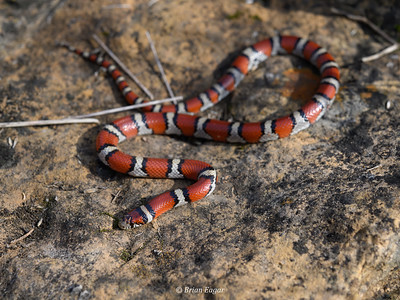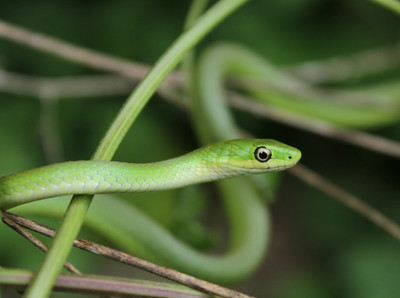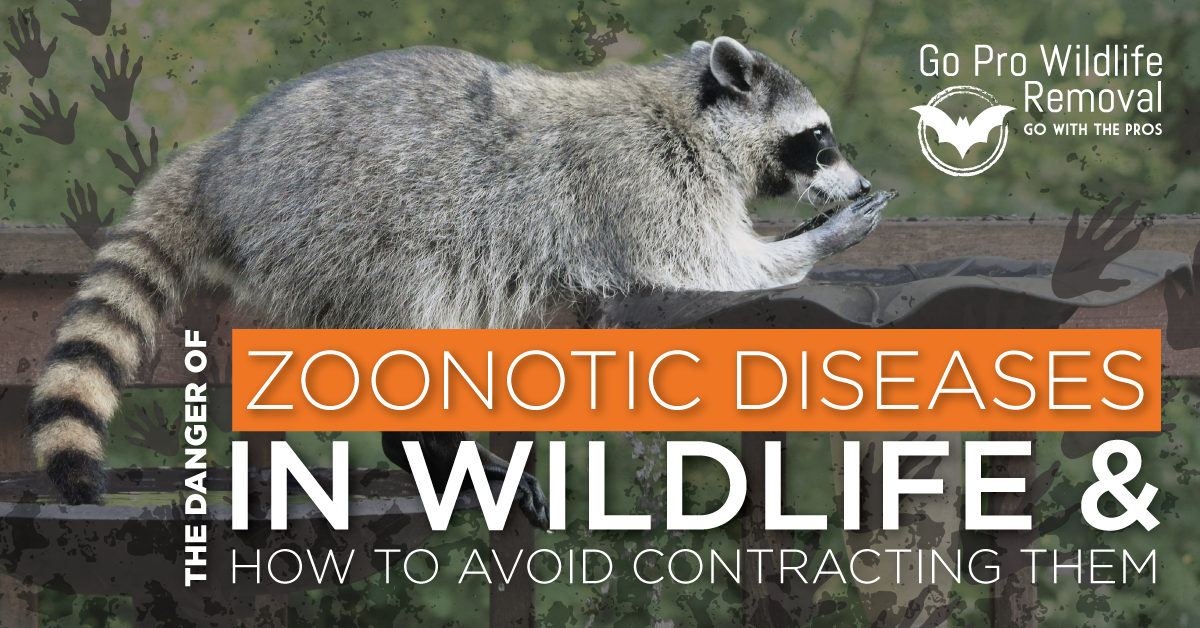by TRINDGROUP
Share

As temperatures begin to rise in Alabama, more snakes will begin slithering their way out of hibernation. While these reptiles can be frightening to cross paths with, many pose little threat to humans. Snakes serve a beneficial role in our ecosystem so it’s important, when you can, to not cause unneeded harm to them. You might already be familiar with the five most common non-venomous snakes in Alabama which include the gray rat snake, garter snake, eastern hognose, blacker racer and brown water snake. However, there are six additional non-venomous snakes to be aware of as the weather begins to change.
#1 Southern Water Snake
 Southern water snakes (also known as the banded water snake) are typically found near bodies of water in southern states, including Alabama. They are primarily found in fresh, shallow waters including lakes, ponds, rivers, streams and wetlands.
Southern water snakes (also known as the banded water snake) are typically found near bodies of water in southern states, including Alabama. They are primarily found in fresh, shallow waters including lakes, ponds, rivers, streams and wetlands.
This species is considered a medium-sized snake and is typically four feet long. They often get mistaken for cottonmouth snakes because of their color. Southern water snakes are mostly dark brown with lighter broad bands throughout the body but can vary in shades. They also have small, squared reddish spots on their bellies.
As for prey, the southern water snakes enjoy a variety of aquatic wildlife including small fish, toads, salamanders and tadpoles. While they are non-venomous, they can aggressively strike if they feel threatened. They are known to release a foul smell and then bite repeatedly. This bite will not kill you, but it can be painful.
#2 Kingsnake
 When you imagine a kingsnake, you might think of the typical bright orange and black snake with a chain-like pattern on its back. However, there are many different variations of color and pattern. In fact, there are seven types found in different regions of Alabama including the black kingsnake, eastern kingsnake, scarlet kingsnake, speckled kingsnake, mole kingsnake, red milk kingsnake and prairie kingsnake.
When you imagine a kingsnake, you might think of the typical bright orange and black snake with a chain-like pattern on its back. However, there are many different variations of color and pattern. In fact, there are seven types found in different regions of Alabama including the black kingsnake, eastern kingsnake, scarlet kingsnake, speckled kingsnake, mole kingsnake, red milk kingsnake and prairie kingsnake.
Kingsnakes get their name because they eat other snakes, including venomous ones like copperheads and rattlesnakes. Aside from snakes, they also eat lizards, bird eggs, rodents and frogs. They are moderate-sized, around three to five feet long.
Depending on the type, kingsnakes can be found in different parts of Alabama. For example, the black kingsnake is commonly located in the northern portion of the state, while the eastern kingsnake is only found in the southeast portion of the state. Kingsnakes are found in forests and grassland areas near bodies of water. They like to hide under leaves, pine straw, rocks and logs.
Kingsnakes are not known to be very aggressive, but like all snakes they can bite.
#3 Corn Snake
 Chances are you might have seen a corn snake out in the wild or as a pet. Corn snakes are non-venomous and pretty much harmless to humans. Their beautiful orange color and reluctance to bite, makes them popular among snake owners.
Chances are you might have seen a corn snake out in the wild or as a pet. Corn snakes are non-venomous and pretty much harmless to humans. Their beautiful orange color and reluctance to bite, makes them popular among snake owners.
Corn snakes are a slim subspecies of the rat snake and are typically two to five feet long. They usually have a deep orange or reddish-brown base color with several darker orange or brown blotches surrounded in black along its body. Corn snakes closely resemble copperhead snakes and are often killed due to this mistaken identity. One way to accurately identify a corn snake is by looking at their bellies, which has a black and white chess-like pattern.
This snake feeds on rodents, birds and lizards. You are most likely to find corn snakes near wooded areas, wetlands or abandoned buildings. Occasionally, they might even climb trees to eat unattended bird eggs.
Corn snakes pose no harm to humans and it’s important to identify them correctly so they can continue benefiting the ecosystem.
#4 Ribbon Snake
 The ribbon snake gets its name from their very slender body type. They are commonly mistaken for garter snakes, but there are a few ways to tell them apart. Ribbon snakes are very dark brown (almost black) with three bright yellow, sometimes cream, stripes on their back. They also have a significantly longer tail than garter snakes and are 16 to 28 inches long.
The ribbon snake gets its name from their very slender body type. They are commonly mistaken for garter snakes, but there are a few ways to tell them apart. Ribbon snakes are very dark brown (almost black) with three bright yellow, sometimes cream, stripes on their back. They also have a significantly longer tail than garter snakes and are 16 to 28 inches long.
This snake is known to be semi-aquatic and rarely far from water. In fact, they prefer moist environments like ponds, streams and wetlands. Their favorite source of prey is frogs, but they also eat other aquatic life like small fish and amphibians.
Mostly active during the spring months when it is raining, ribbon snakes are not aggressive and will secrete a foul-smelling musk to deter predators.
#5 Milk Snake
 Similar to the corn snake, the milk snake is known to be a popular pet among snake owners. Milk snakes are located throughout the northeastern regions of Alabama and are a subspecies of the kingsnake. They are primarily four to five feet in length with a bright red body and black and red bands, similar to the kingsnake. Milk snakes are often killed because they get mistaken for venomous coral snakes. One difference to note is coral snakes have red and yellow bands together instead of red and black. To remember this difference, use the rhyme “Red on yellow kills a fellow. Red on black, friend of Jack.”
Similar to the corn snake, the milk snake is known to be a popular pet among snake owners. Milk snakes are located throughout the northeastern regions of Alabama and are a subspecies of the kingsnake. They are primarily four to five feet in length with a bright red body and black and red bands, similar to the kingsnake. Milk snakes are often killed because they get mistaken for venomous coral snakes. One difference to note is coral snakes have red and yellow bands together instead of red and black. To remember this difference, use the rhyme “Red on yellow kills a fellow. Red on black, friend of Jack.”
Milk Snakes can live in a variety of habitats but prefer forested areas and rocky landscapes. They spend much of their time under dark, hidden places like rocks and logs. Milk snakes can be found in abandoned buildings, farms and other debris. As for prey, they eat rodents, lizards, bird eggs and sometimes even coral snakes.
This species is very reluctant to bite humans and can make a great pet.
#6 Rough Green Snake
 Rough green snakes are easily identifiable, however because of their bright green color, they often blend in with their surroundings. They range from two to three feet in length and are relatively slender. Their petite size doesn’t stop them from having a large appetite.
Rough green snakes are easily identifiable, however because of their bright green color, they often blend in with their surroundings. They range from two to three feet in length and are relatively slender. Their petite size doesn’t stop them from having a large appetite.
This species diet consists of mostly insects, but they also enjoy small frogs and snails. Regarding habitat, rough green snakes prefer areas they can easily camouflage in. This includes thick vegetation, shrubs and bushes. They are also known to climb trees and stalk their prey from a higher angle.
Rough green snakes are practically harmless to humans and will only expel a noxious mixture of feces, uric acid and musk to deter predators.
What Can I do if There is a Snake on my Property?
Venomous or not, finding a snake on your property can be frightening. It’s important to familiarize yourself with local, non-venomous snakes so you can identify those that have the potential to harm you. It is very normal to see a snake on your property, especially in Alabama. Most of the time, snakes are just passing through, never to be seen again. Do not attempt picking the snake up, but rather watch it from a safe distance to ensure your safety. Snakes will typically vacate on their own.
Go Pro Wildlife Removal is an experienced and knowledgeable team ready to help with the identification or removal of unwanted guests. To learn more about services or request an inspection, give us a call at (334) 744-0391.
Don’t Play Opossum, Protect Your Home!
How much do you know about opossums? Opossums are one of the most adaptable creatures on planet earth, thriving in different environments that many animals cannot. Opossums are survival specialists, thriving in the wild or in domesticated areas like your neighborhood.
Contact Info
Contact Go Pro today! We offer wildlife removal solutions in Auburn, Opelika, Lake Martin, Valley, Montgomery, AL and Columbus, GA areas.
Phone: (334) 744-0391
Hours: Open 9:00 am – 5:00 pm







